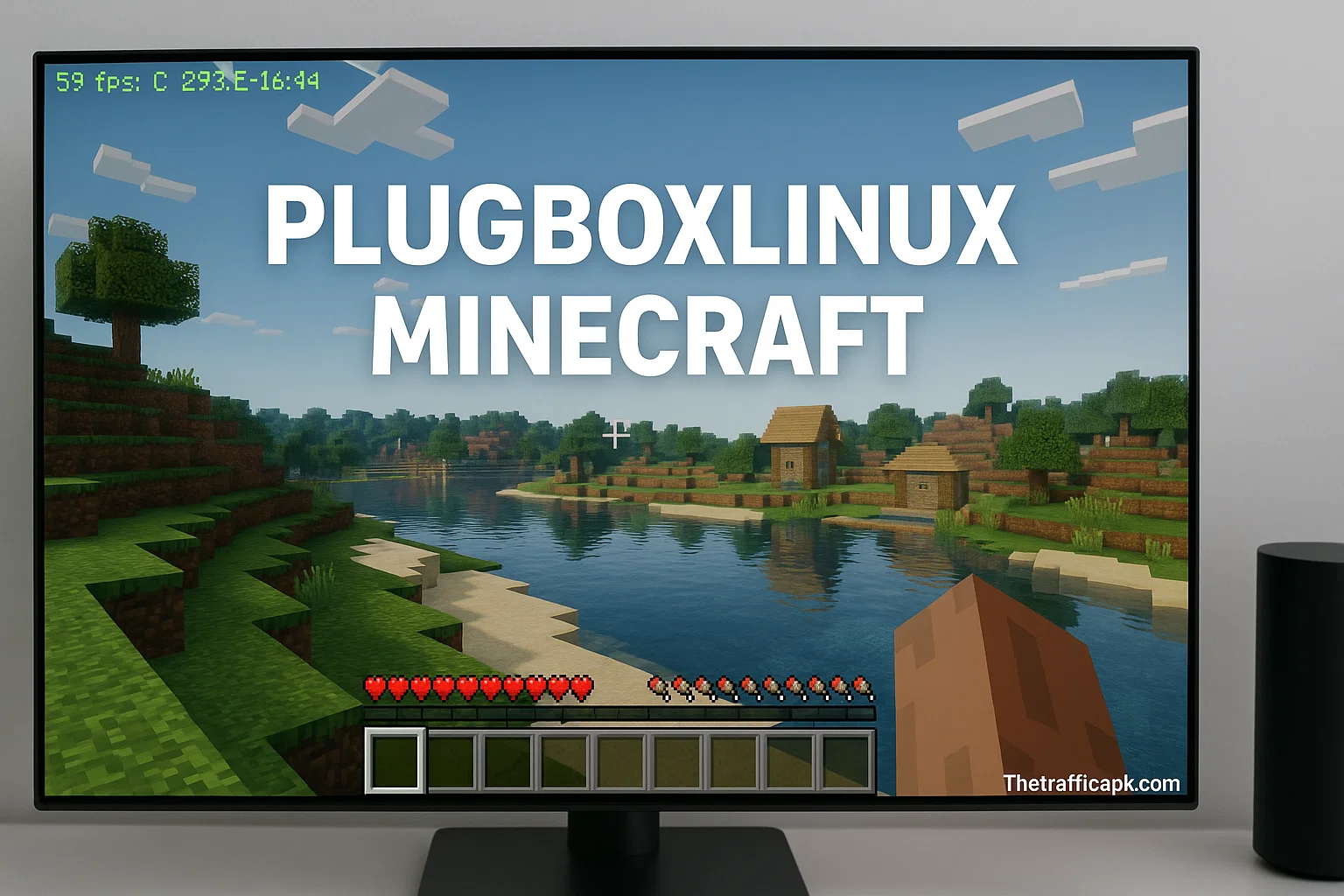PlugboxLinux Minecraft: Optimize Your Game Server for Performance

Introduction to PlugboxLinux and Minecraft
Have you ever thought about using a lightweight Linux distribution to run a Minecraft server? If you’re like me, you’re always on the lookout for ways to get better performance, especially when running games that demand a lot of resources. One day, I came across PlugboxLinux, a minimal Linux distribution designed to optimize system performance. I was curious if it could be a great option for running Minecraft—without all the bloat from standard operating systems.
In this article, I’ll walk you through what PlugboxLinux is, why it might be a great choice for your Minecraft server, and how you can set it up for smooth performance. Having used traditional Linux distros like Ubuntu and CentOS for hosting Minecraft in the past, I thought PlugboxLinux could offer something fresh. If you’re tired of sluggish performance, this may be the solution you’ve been looking for.
What is PlugboxLinux?
Before we dive into setting up your Minecraft server, let’s take a moment to understand what PlugboxLinux is and why it’s worth considering.
A Lightweight Linux Distro for Efficiency
PlugboxLinux is a minimal, lightweight Linux distribution that’s designed to be efficient and customizable. Unlike full-featured distributions like Ubuntu or Fedora, PlugboxLinux keeps things simple by providing only the essential tools. The idea is to give users control over their system without unnecessary features bogging it down.
From my experience, running a game server on a minimal OS can result in better performance because fewer background processes are running. I’ve found that systems like PlugboxLinux run faster and smoother, especially on older hardware or low-resource virtual machines. You get more performance for your game server and fewer distractions from the operating system itself.
A Game-Friendly Operating System
What makes PlugboxLinux a good fit for gaming? It’s minimalism. When running Minecraft, you need as many system resources as possible to be dedicated to the game—CPU, RAM, and I/O. PlugboxLinux allows you to use more of your hardware’s power for Minecraft instead of wasting resources on non-essential tasks. This makes it an ideal choice for game servers.
In my case, after switching from Ubuntu to PlugboxLinux on an older VM, I noticed a noticeable improvement in how the game ran. There was less lag, and I could host more players with fewer hiccups. It made me realize how much a lightweight distro could benefit gaming, especially for people who aren’t running the latest hardware.
Why Choose PlugboxLinux for Minecraft?
There are several reasons why PlugboxLinux stands out when it comes to hosting a Minecraft server.
Lower System Resource Usage
One of the most significant advantages of PlugboxLinux is its low resource consumption. Most traditional Linux distros come with a lot of unnecessary software running in the background. This can lead to slower performance when running a server like Minecraft.
With PlugboxLinux, the OS uses far less CPU and RAM than heavier distributions. From my experience, when I set up a Minecraft server on PlugboxLinux, the system was idling at just 300MB of RAM usage, compared to 600MB on other distros. This means that more memory and CPU power are available for the game, improving its performance, especially with multiple players online.
Perfect for Modding and Customization
Minecraft is a game that thrives on customization. Whether you want to run a modded server or install plugins for better performance, having a flexible and customizable OS is essential. PlugboxLinux gives you the freedom to pick only the software you need. You can install the necessary tools for Minecraft and leave out the rest, which helps your server run smoother and faster.
When I set up my server, I appreciated how easy it was to install only the necessary packages for Minecraft, without all the extra bloatware. This made the whole setup process simpler and allowed me to focus on customizing the server to my needs.
How to Install PlugboxLinux for Minecraft
Now that you know why PlugboxLinux is a good fit for your Minecraft server, let’s go through the installation process. It’s pretty straightforward, but I’ll break it down into simple steps based on my experience.
Step 1: Download and Install PlugboxLinux
The first thing you need to do is download the PlugboxLinux ISO from the official website. You can then create a bootable USB drive or mount the ISO in a virtual machine (VM). I personally used a VM with 2 cores and 8GB of RAM, and it worked perfectly. The installation process is simple: you follow the on-screen instructions, choose your preferred settings, and let the OS install.
Once the installation is complete, you’ll have a lightweight and functional operating system that’s ready to be configured.
Step 2: Install Java for Minecraft
Minecraft is built on Java, so the next step is installing the Java runtime environment. You can install OpenJDK 17 or another supported version of Java, depending on the Minecraft version you’re running. I installed Java using the package manager on PlugboxLinux:
sudo pacman -S jre-openjdk
After that, you can verify Java was installed correctly by running:
java -version
This should display the installed version of Java, confirming that everything is set up correctly.
Step 3: Download the Minecraft Server
Now that Java is installed, you can download the Minecraft server jar from the official Minecraft website. Place it in a dedicated directory on your system. For example, I created a folder called minecraft_server in my home directory. After downloading the server file, you can start the server by running the following command:
java -Xmx4G -Xms2G -jar server.jar nogui
This command tells Minecraft to use 4GB of memory for the server and start up without the graphical user interface (GUI) to save on resources.
How to Optimize Minecraft Performance on PlugboxLinux
Once your server is up and running, the next step is optimization. Minecraft can be resource-hungry, so it’s essential to fine-tune the settings for the best performance.
Tuning Memory Allocation
When running Minecraft on a Linux server, you can adjust how much RAM is allocated to the game. Minecraft uses the Java Virtual Machine (JVM) to run, and you can control the initial and maximum memory allocation with the -Xms and -Xmx flags, respectively.
For example, I set my server to use a minimum of 2GB and a maximum of 4GB of RAM:
java -Xmx4G -Xms2G -jar server.jar nogui
This helped avoid slowdowns when the server had multiple players or when loading large worlds.
Optimizing for Mods and Plugins
If you’re running a modded Minecraft server, you’ll need to account for the additional resources that mods consume. In this case, it’s important to monitor system performance and adjust memory settings accordingly.
I ran into issues when I first loaded too many mods without increasing memory allocation. After tweaking the JVM settings to use more RAM, the server ran much smoother. Plus, I made sure to install only the mods I needed, keeping the server lean and efficient.
Monitoring Your Minecraft Server
Once your server is running, monitoring its performance is crucial. I’ve found that PlugboxLinux makes it easy to keep track of how the server is performing.
System Monitoring Tools
PlugboxLinux comes with a lightweight set of monitoring tools, such as htop and nload. These tools show CPU usage, memory usage, and network activity in real-time. I use htop to keep an eye on system resources while the server is running, and nload to check network bandwidth. If you ever see high CPU or memory usage, it’s a good indicator that something is wrong, and you need to adjust the settings.
Regular Backups
Another critical step in maintaining a smooth Minecraft experience is setting up regular backups of your world data. I schedule daily backups using cron jobs, ensuring that if anything goes wrong, I have a backup to restore. Here’s an example of how you can set up a simple backup command:
0 3 * * * cp -r /home/mcuser/minecraft_server/world /home/mcuser/backups/world_$(date +\%Y\%m\%d)
This cron job runs every day at 3:00 AM and copies the world folder to a backup location with a timestamp.
Read More: What is Jojoy Minecraft?
Conclusion: Is PlugboxLinux the Right Choice for Minecraft?
After running a Minecraft server on PlugboxLinux for several months, I can confidently say it’s a great option if you’re looking for a fast, lean, and efficient way to host your server. The performance boost, especially on older hardware or VMs, is noticeable. Plus, the minimal nature of the OS lets you allocate more resources to Minecraft and mods, which means a better experience for players.
In my opinion, if you’re comfortable with Linux and want a no-nonsense, customizable OS for your Minecraft server, PlugboxLinux is a fantastic choice. It might require a bit more setup compared to more popular distros, but the performance benefits are worth it.





